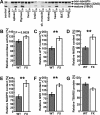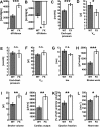Activation of mitochondrial energy metabolism protects against cardiac failure
- PMID: 21084725
- PMCID: PMC3006026
- DOI: 10.18632/aging.100234
Activation of mitochondrial energy metabolism protects against cardiac failure
Abstract
Cardiac failure is the most prevalent cause of death at higher age, and is commonly associated with impaired energy homeostasis in the heart. Mitochondrial metabolism appears critical to sustain cardiac function to counteract aging. In this study, we generated mice transgenically over-expressing the mitochondrial protein frataxin, which promotes mitochondrial energy conversion by controlling iron-sulfur-cluster biogenesis and hereby mitochondrial electron flux. Hearts of transgenic mice displayed increased mitochondrial energy metabolism and induced stress defense mechanisms, while overall oxidative stress was decreased. Following standardized exposure to doxorubicin to induce experimental cardiomyopathy, cardiac function and survival was significantly improved in the transgenic mice. The insulin/IGF-1 signaling cascade is an important pathway that regulates survival following cytotoxic stress through the downstream targets protein kinase B, Akt, and glycogen synthase kinase 3. Activation of this cascade is markedly inhibited in the hearts of wild-type mice following induction of cardiomyopathy. By contrast, transgenic overexpression of frataxin rescues impaired insulin/IGF-1 signaling and provides a mechanism to explain enhanced cardiac stress resistance in transgenic mice. Taken together, these findings suggest that increased mitochondrial metabolism elicits an adaptive response due to mildly increased oxidative stress as a consequence of increased oxidative energy conversion, previously named mitohormesis. This in turn activates protective mechanisms which counteract cardiotoxic stress and promote survival in states of experimental cardiomyopathy. Thus, induction of mitochondrial metabolism may be considered part of a generally protective mechanism to prevent cardiomyopathy and cardiac failure.
Conflict of interest statement
The authors of this paper declare no conflict of interests.
Figures





Comment in
-
Mitochondrial Fe-S cluster biogenesis, frataxin and the modulation of susceptibility to drug-induced cardiomyopathy.Aging (Albany NY). 2010 Nov;2(11):754-5. doi: 10.18632/aging.100238. Aging (Albany NY). 2010. PMID: 21113085 Free PMC article. No abstract available.
Similar articles
-
Cannabidiol Protects against Doxorubicin-Induced Cardiomyopathy by Modulating Mitochondrial Function and Biogenesis.Mol Med. 2015 Jan 6;21(1):38-45. doi: 10.2119/molmed.2014.00261. Mol Med. 2015. PMID: 25569804 Free PMC article.
-
Cardiotoxicity of doxorubicin is mediated through mitochondrial iron accumulation.J Clin Invest. 2014 Feb;124(2):617-30. doi: 10.1172/JCI72931. Epub 2014 Jan 2. J Clin Invest. 2014. PMID: 24382354 Free PMC article.
-
Progressive mitochondrial protein lysine acetylation and heart failure in a model of Friedreich's ataxia cardiomyopathy.PLoS One. 2017 May 25;12(5):e0178354. doi: 10.1371/journal.pone.0178354. eCollection 2017. PLoS One. 2017. PMID: 28542596 Free PMC article.
-
Insulin receptor substrate signaling controls cardiac energy metabolism and heart failure.J Endocrinol. 2017 Jun;233(3):R131-R143. doi: 10.1530/JOE-16-0679. Epub 2017 Apr 5. J Endocrinol. 2017. PMID: 28381504 Free PMC article. Review.
-
Iron metabolism and mitochondrial abnormalities in Friedreich ataxia.Blood Cells Mol Dis. 2002 Nov-Dec;29(3):536-47; discussion 548-52. doi: 10.1006/bcmd.2002.0591. Blood Cells Mol Dis. 2002. PMID: 12547248 Review.
Cited by
-
High-fat feeding-induced hyperinsulinemia increases cardiac glucose uptake and mitochondrial function despite peripheral insulin resistance.Endocrinology. 2013 Aug;154(8):2650-62. doi: 10.1210/en.2012-2272. Epub 2013 May 24. Endocrinology. 2013. PMID: 23709089 Free PMC article.
-
Drosophila melanogaster Models of Friedreich's Ataxia.Biomed Res Int. 2018 Apr 5;2018:5065190. doi: 10.1155/2018/5065190. eCollection 2018. Biomed Res Int. 2018. PMID: 29850527 Free PMC article. Review.
-
Oxidative stress and anti-oxidant enzyme activities in the trophocytes and fat cells of queen honeybees (Apis mellifera).Rejuvenation Res. 2013 Aug;16(4):295-303. doi: 10.1089/rej.2013.1420. Rejuvenation Res. 2013. PMID: 23738955 Free PMC article.
-
A Review on the Effect of Traditional Chinese Medicine Against Anthracycline-Induced Cardiac Toxicity.Front Pharmacol. 2018 May 15;9:444. doi: 10.3389/fphar.2018.00444. eCollection 2018. Front Pharmacol. 2018. PMID: 29867456 Free PMC article. Review.
-
Mitochondrial hormesis links low-dose arsenite exposure to lifespan extension.Aging Cell. 2013 Jun;12(3):508-17. doi: 10.1111/acel.12076. Epub 2013 May 6. Aging Cell. 2013. PMID: 23534459 Free PMC article.
References
-
- Rosamond W, Flegal K, Friday G, Furie K, Go A, Greenlund K, Haase N, Ho M, Howard V, Kissela B, Kittner S, Lloyd-Jones D, McDermott M et al. Heart disease and stroke statistics-2007 update: a report from the American Heart Association Statistics Committee and Stroke Statistics Subcommittee. Circulation. 2007;115:69–171. - PubMed
-
- Herrmann G, Decherd G. The chemical nature of heart failure. Ann Intern Med. 1939;12:1233–1244.
-
- Rimbaud S, Garnier A, Ventura-Clapier R. Mitochondrial biogenesis in cardiac pathophysiology. Pharmacol Rep. 2009;61:131–138. - PubMed
-
- Neubauer S. The failing heart - an engine out of fuel. N Engl J Med. 2007;356:1140–1151. - PubMed
Publication types
MeSH terms
Substances
LinkOut - more resources
Full Text Sources
Medical
Research Materials

